Niio Select Artists
Curated Catalog #2
Explore and Experience New Media Art
Niio connects with our digital culture by enabling and stimulating the market for video and new media art. Our curated distribution platform empowers a global network of leading artists, galleries, libraries and institutions to self-publish media art forms which can be borrowed or acquired and then viewed on connected display devices anywhere in the world.
Contact Art Advisor
Daniel Belton and Good Company Arts
AXIS - water planet
AXIS – anatomy of space – created by choreographer, film-maker and New Zealand Arts Laureate Daniel Belton. AXIS is a collaboration between Good Company Arts and renowned artists Joyce Beetuan Koh, PerMagnus Lindborg, Tanya Carlson, Jac Grenfell, Jim Murphy, and Donnine Harrison with artists of the Royal New Zealand Ballet. With the same evolutionary effect as was followed by the ancient Greeks in their search for beauty, AXIS offers a resonating, lyrical space. Dancers are seen travelling through apertures tensioned with the happening of projected light. Their choreography establishes a circuitry of luminosity – illuminating song cycles in a cosmic choreography of light to celebrate the water planet, Earth. AXIS creates a new search with the human figure in space – as expanded cinema and processed sound performance combine. This special edition draws from the original work designed for full dome 360. Good Company Arts “Water is the driving force of all nature” Leonardo da Vinci
Daniel Belton and Good Company Arts
AXIS Eclipse
“AXIS – eclipse” offers a dimensional arena where dancers can multi-locate in the blink of an eye. In this elastic field, figures switch places like notes on a musical score. Dancers are seen travelling through apertures tensioned with the happening of projected light. Their choreography establishes a circuitry of luminosity. Human beings are standing wave patterns of energy – we are complex harmonics. Our bodies are solid, but from another frequency, we might look like filaments of light transmitting as energy fields. Ultimately our physical bodies are the products of wave actions. In an inspirational sense the pull of this work promotes a language that literally encodes human gesture and voice in projected light environments. The dancers are engineers and players inside an orrery-like celestial game. Daniel Belton and Good Company Arts
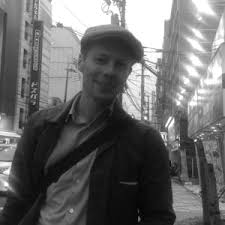
Daniel Belton and Good Company Arts
Art Collective
Co-founder and Artistic Director of Good Company Arts, Daniel was born in the Horowhenua region of New Zealand in 1970. He was a principal dancer with renowned Danish choreographer, Kim Brandstrup’s Arc Dance Company in London in the 1990’s. During his performance career he worked with dance theatre luminaries including Kim Brandstrup, Irek Mukhamedov, Douglas Wright Company, Tanz Company Gervasi and Lindsay Kemp Company. He established Good Company Arts in New Zealand with Donnine Harrison. The ensemble has become well-known as arts innovators and is acclaimed internationally for producing powerful, sensory experiences where human movement intersects with fine arts and digital technologies. Award highlights include the Prague Quadrennial of Performance Design and Space, World Stage Design Festival, Cinedans, Festival Internacional de la Imagen and ISEA, Dance on Camera New York, Genius Loci Weimar International Video Mapping Festival, Romaeuropa International Festival, Zentrum Paul Klee, Museo de Arte Moderno de Buenos Aires, Tempo Festival Auckland, Attakkalari India Biennial, Oceanic Performance Biennial, Arts House Singapore, Aarhus Festival Denmark, Royal New Zealand Ballet, Te Papa Tongarewa Museum of New Zealand, Xintiandi Festival Shanghai, and the inaugural Sino x Niio Illumination Arts Awards Hong Kong. Good Company Arts creates live events and installations through the fusion of multiple art forms for theatres, museums, found spaces, new media and architectural facades, cinema, planetariums and VR. Daniel is an accomplished trans-media creator with 21+ years experience working in and researching film, cinematography, projection mapping, motion capture, editing, fine art, sound and design. He was the recipient of Creative New Zealand’s Choreographic Research Residency at Otago University 2003, visiting Artist in Residence at Massey University 2008, and Arts Council of New Zealand’s Choreographic Fellow for 2009. In 2015 he was awarded a prestigious Arts Foundation of New Zealand Arts Laureate.
Francesca Fini
SKINNED
written, directed and animated by Francesca Fini music by Pandacetamol (freemusicarchive.com) A Dadaist collage that plays on the concept of identity, elaborated through impossible selfies taken by the protagonists of famous masterpieces in the history of portraiture and self-portrait. What is hidden under the skin, skinned by the toxic radiation of mobile phones? What would Leonardo da Vinci or Andy Warhol have done with this evil device?
Francesca Fini
DADALOOP
concept, direction, 3d animation by Francesca Fini
main music track “HHH – Kosta T & Ghofra Z” short excerpts from Ria Rosa “Fresca fresca” text from Ella Firtzgerald and Louis Armstrong “Let’s Call the Whole Thing Off”
Digital images courtesy of Getty’s Open Content Program Rijksstudio – Rijks Museum public domain collection
DADALOOP is a dadaist ratatouille of images in which food becomes a dream – or nightmare – and the reflection of schizophrenic diets in the claustrophobic frame of a self-portrait. The film stages a series of surreal trompe l’oeil inside an artificial 3D landscape in which an hybridized language brings together original video clips – starring the artist herself – and animations made with a collage of cut-out images from famous works of art related to the theme of food.
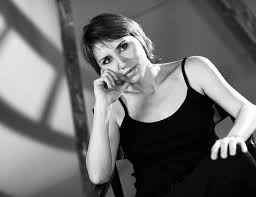
Francesca Fini
Art Collective
Francesca Fini is an interdisciplinary artist working with experimental cinema, digital animation, new media, installation and performance art. Her many and varied projects, often addressing issues related to femininity, the distortions in the perception of beauty, the influences of society on gender and women’s issues, are a mix of traditional and digital media, lo-fi technology, 3D animation, homemade interaction design devices, live audio and video. Her work has been presented in many important international festivals and venues, among them the 2011 WRO Biennale in Poland, NordArt International Art Exhibition in Germany, at FILE Electronic Language International Festival in Brasil, at CYBERFEST in Russia, at Instants Video numériques et poétiques in Marseille, at BORDERCROSSING collateral event @ MANIFESTA12 in Palermo, at the Guggenheim Museum in Bilbao for MEM Festival, at MANA Contemporary for BODY + CAMERA FESTIVAL, at MACRO and MAXXI Museum in Rome, at SomoS Art House in Berlin, at the Japan Media Arts Festival in Tokyo and the Margaret Guthman Musical Instrument Competition, organized by the Georgia Institute of Technology in Atlanta.
Joe Hamilton
Cézanne Unfixed
In Cézanne Unfixed, the relationship between the painting and the museum in the installation photograph is blurred. In his time, Cézanne was influenced by developments in science to challenge the ways of modelling space and volume, and this artwork continues that work. The brushstrokes of Cézanne break from their canvases to inhabit the spatial dimensions of the museum while the architecture flattens into the surface of the image plane. While old barriers are fractured, new barriers are created in the medium of this artwork, the digital video file.
Joe Hamilton
Close to Infinite
Close to Infinite, is a meandering journey through landscapes suspended in various states of decomposition. Architectural ruins are draped in withering flowers, leaves and foliage. The cycle of desolate scenes is a reflection on our mortality and the impermanence of structure and material.
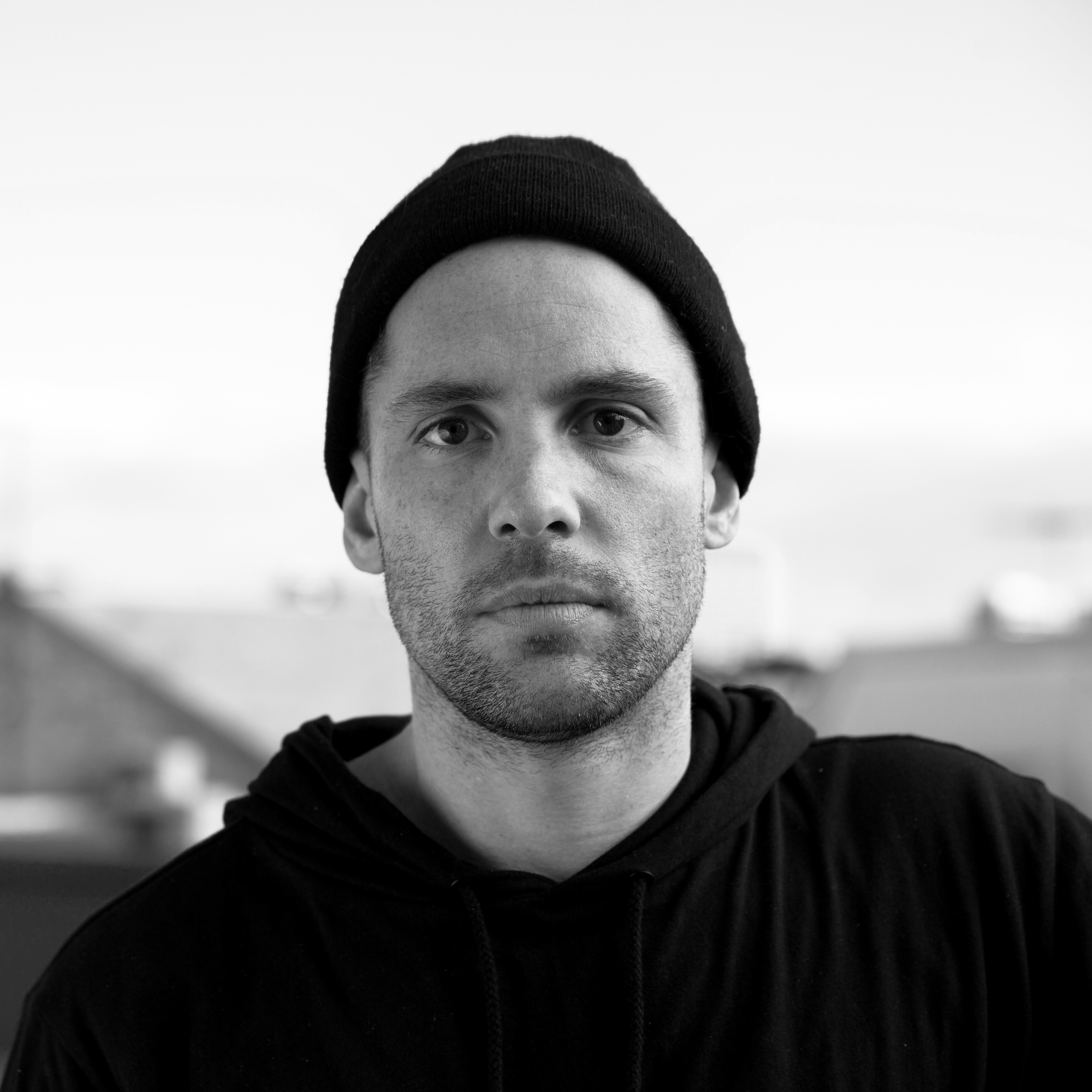
Joe Hamilton
Artist
Joe Hamilton (b. 1982 Tasmania) makes use of technology and found material to create intricate and complex compositions online, offline and in-between. His recent work questions our established notions of the natural environment within a society that is becoming increasingly networked. Hamilton holds a BFA from the University of Tasmania and an MA from RMIT in Melbourne. His work has been included in recent group exhibitions at The Moving Museum Istanbul, The Austrian Film Museum, Kunsthalle Düsseldorf and The New Museum in New York.
Claudia Hart
StillLife - 1.1
StillLife – 1.1 was inspired by the Henri Matisse Red Interior, Still-life on Blue Table from 1947. It uses a mathematical simulation for generation to grow the flowers based on fractal geometry. The flowers were set to grow half way through the 5 minute animation. There is no “death” function in simulations softwares, so instead, I inverted the growth function which caused the flowers in the still life to glitch, break up, and ultimately disappear, a digital version of “death.” Instead of painting decorative patterns on the elements like Matisse did, I chose colors, and programmed a procedural pattern that would randomly evolve over the five minutes of the work.
Claudia Hart
StillLife - 1.2
StillLife – 1.2 was inspired by the canonical Henri Matisse Painting, The Blue Window from 1913. Like all of the work in this still-life series, it uses a mathematical simulation to generate a representational image, somewhere between a painting, a photo and a sculpture. In this work, I tried to navigate the problem of interpreting the 19th century concept of a painting as reflecting the “flatness” of a canvas and the flat but fluid paint that sits upon it, but interpreted in a 21st-century 3D space. In the 21st-century simulations softwares, space is “x,y,z,” a Cartesian mathematical construction used by computers to generate the illusion of depth. The 21st century metaphor of a gridded “matrix” is a powerful one, and The Matrix, the 1999 film by the the Wachowskis Brothers is a symbol of our time. In my still-life work, I am trying to express that perceptual change from the point of view of artist living in the now but feeling herself to be part of a continuity – the great tradition of 21st century painting.
Claudia Hart
StillLife - 1.3
StillLife – 1.3 was inspired by the Vincent Van Gogh sunflower still lives and his fields of wheat, all painted from 1888-1889. Like all of the works in my still life series, it also uses a mathematical simulation for generation to grow the flowers based on fractal geometry. The flowers were set to grow half way through a 5-minute animation that I later slowed to 10, because it “felt” wrong. My approach to mathematics is as intuitive and expressive as the School of the Paris painters. I use algorithms and rules to set up structures, then break all of my rules until it has an emotional expressiveness that mirrors my own inner life.
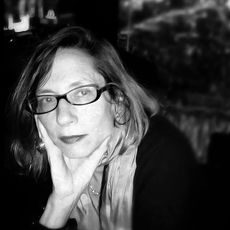
Claudia Hart
Artist
Sara Ludy
Fire Mountain
Fire Mountain is a digital animation from Ludy’s ongoing series, Clouds (2011 – present). This series employs computer imaging programs to generate animated paintings. Dozens of painterly compositions are layered to create tangible textures, referencing the desire for virtuality to manifest physically.
Sara Ludy
Sky Ruby
Sky Ruby is digital animation from the ongoing series Clouds (2011 – present) by Sara Ludy. These works employ computer imaging programs to generate animated paintings. Through glassy textures and interwoven forms, Sky Lapis and Sky Ruby evoke the amorphous landscapes found in Ludy’s oneiric VR environments.
Sara Ludy
Rooms
Rooms is a spatial exploration of a house model downloaded from the Google Sketchup 3D Warehouse. The video shows familiar elements of an architecture twisting and abstracting into a disorienting experience.
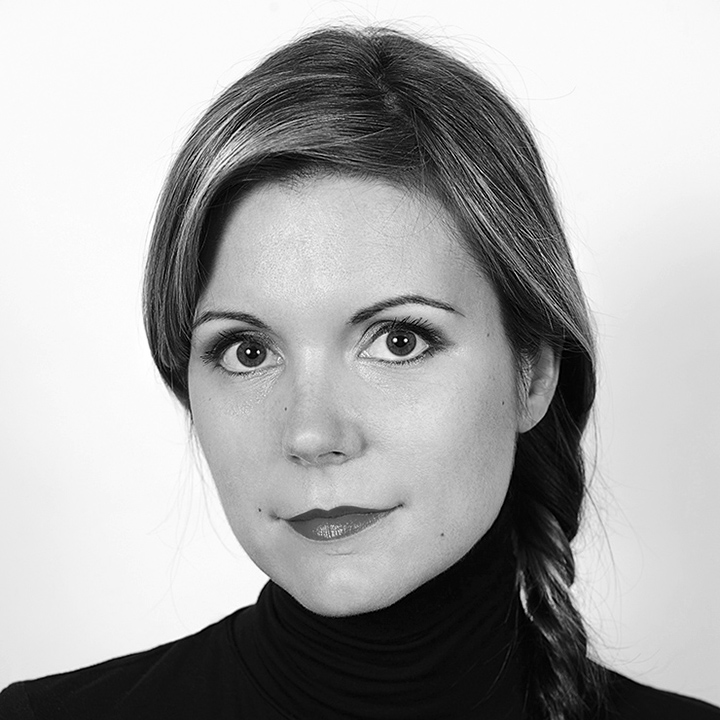
Sara Ludy
Artist
Sara Ludy’s practice investigates the confluence of the physical and virtual. Her works include video, sound, animation, virtual reality, websites, audiovisual performance, sculpture, photography, painting, and installation.
Alex McLeod
Walking Seasons
Alex McLeod
The Same Place
A landscape is viewed from a birds eye, as the animation plays similarities begin to appear suggesting a loop, but something is different.
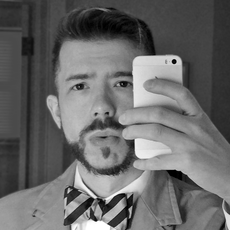
Alex McLeod
Artist
McLeod (1984) is an artist concerned with simulation and the transition of matter.
McLeod draws on a multifaceted background in advertising, communications and rapid prototyping that combine to facilitate his innovative practice. Having completed a BFA from Ontario College of Art and Design, McLeod is currently attending Digital Media at Ryerson University. McLeod’s practice is at the cusp of intersecting new technologies. Borrowing from the media and mechanisms of social networking McLeod creates technically sophisticated 3D environments, that are as much backdrops for advertising campaigns, as they might be the cinematic narrative for a new music video. Such uncertainty allows his works to exist as animated allegories.
Jonathan Monaghan
No Longer Dead
Referencing the iconic medieval imagery of a unicorn in captivity, No Longer Dead follows a psychedelic unicorn walking within an empty gray space resembling a photo studio. This ambiguous backdrop is populated with vignettes depicting security checkpoints, consumer electronics and baroque palaces. The work is a critical reflection of contemporary life, suggesting a type of captivity within modern consumer culture and the security state.
Jonathan Monaghan
Scroll
Scroll is a seamlessly looping video installation depicting an endless vertical column of cryptic technological contraptions, architecture, fur, and fabric. The unsettling ambiguity of the forms and the discordance between artificial and natural materials confronts the ever-blurring border between technology and the organic.
Jonathan Monaghan
The Phoenix and the Medusa
The mythological Phoenix is rendered as a golden chimera, its head replaced with an ominous surveillance camera. The bird meets its inevitable demise above a consumer-electronics store, perched above a jellyfish-like creature composed of intricate Beuax-Arts architecture, hovering gracefully among the clouds. Trapped in a contentiously looping cycle, the work alludes to the cycles of destruction and creation of modern capitalism.
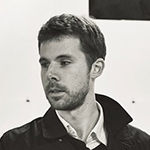
Jonathan Monaghan
Artist
Jonathan Monaghan (b. 1986, New York) works across a range of media, including prints, sculpture and animated video, to produce otherworldly objects and narratives. Drawing on wide-ranging sources, such as ancient mythologies, historical artworks and science fiction, his dystopic works elicit subconscious anxieties associated with technology and consumerism. Jonathan received his BFA from the New York Institute of Technology in 2008 and his MFA from the University of Maryland in 2011. His work has been exhibited widely, including group exhibitions at The Sundance Film Festival, The Frist Center for the Visual Arts, and The Palais de Tokyo. Solo exhibitions of his work include The Walters Art Museum in Baltimore, bitforms gallery in New York, Spazio Ridotto in Venice and Market Gallery in Glasgow. His work has been featured in several media outlets including The Washington Post, VICE, The Wall Street Journal and The Village Voice. Monaghan is represented by bitforms gallery in New York Galerie 22,48m2 in Paris.
Ronen Tanchum
Nature Stream A
Observing flowers in wild nature, in search of botanical inspiration, and re imagining them in the digital realm by using computer generated graphic algorithms and physical simulations of flowers in 0 gravity scenarios led to this body of works. This work series reflects on the intersection of the virtual and the physical realms, slowly shifting between order and chaos, and introduces a vast space with an imaginary meditative flower motion stream.
Ronen Tanchum
Nature Stream B
Observing flowers in wild nature, in search of botanical inspiration, and re imagining them in the digital realm by using computer generated graphic algorithms and physical simulations of flowers in 0 gravity scenarios led to this body of works. This work series reflects on the intersection of the virtual and the physical realms, slowly shifting between order and chaos, and introduces a vast space with an imaginary meditative flower motion stream.
Ronen Tanchum
Peacock
in this body of works the artist employs computer generated programs to create animated paintings based on nature footage. Peacock is created using multiple interventions, simulating and inspired by Nature landscape paintings.
Ronen Tanchum
Peacock Feather
in this body of works the artist employs computer generated programs to create animated paintings based on nature footage. Peacock Feather is created using multiple interventions, simulating and inspired by Nature landscape paintings.
Ronen Tanchum
Oil Painting WILD FLOWERS
Digital manipulations over nature scenes documented by the artist in real virtual and virtual environemtns are turned into digital flow of paint in this series of works.
Ronen Tanchum
Tropic Pond
2019 Video Artwork Series. Ronen Tanchum Studio. Commissioned by Niio. Derived from the artist’s series of live, code-based artworks, utilising 3D computer net shaders and visualisation techniques derived from computer sensors. In this body of works the artist creates animated scenes with moving plants and flowers. The Wild Nature Series is made of a few artistic chapters. It captures the spectators and visualizes reflexes, excitement and unbalanced movements, all echoing nature in the wild.
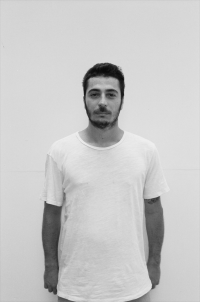
Ronen Tanchum
Artist
Ronen Tanchum creates works at the intersection of art, technology and interaction, and explores the encounter between perceptions of human , social reality and between digital and physical experiences. Conducting social experiments art pieces that creates a visual dialog around the subject of digital art and its implementations into physical experiential of participates. Embracing technologies use and mix media art forms.
Clement Valla
Rye, Dragged over Gneiss Outcropping and Ferns #2A
In China, Scholar’s Rocks are prized objects because they embody the dynamic transformational processes of nature. These processes operate at such a vast timescale that they are otherwise imperceptible to humans.
In these videos, two inverse directions in 3d imaging are collapsed into a single model: simulation (the copy without an original) versus scans (the copy from the material world). The result creates new and different sorts of spatial vision.
The video contains a 3d scan of rock outcropping, a heavy, stable and solid material form. A simulated cloth, light and pliant, glides over the scanned rocky landscape and conforming to and softly hugging it. The simulated cloth becomes a picture surface, like a sensitized photo film warped in three dimensions.
The resulting image warps our sense of space and time. A solid rock formation becomes unstable, liquid, ephemeral, as a result of the simulated flexible picture plane.
Clement Valla
Making Rye, Gneiss Outcropping and Ferns #2B
In this video, two inverse directions in 3d imaging are collapsed into a single model: simulation (the copy without an original) versus scans (the copy from the material world). The result creates new and different sorts of spatial vision.
The video contains a 3d scan of rock outcropping, a heavy, stable and solid material form. A simulated cloth, light and pliant, glides over the scanned rocky landscape and conforming to and softly hugging it.
Computer graphics and simulation have traditionally had the inverse relationship to the material world that photography does: in architecture for example, the computer model precedes reality. The arrow points from within the computer out to the final material form. The advent of 3d scanning and photogrammetry reverses this arrow; the material world is internalized into a computer model.
Having both simulation and scan occupy the same space results in uncanny and unstable images. What is real and what is simulated? What is the difference?
The computer model imaged here also serves to produce a completely different kind of representation. In that sense, this is a “making of” for its companion video, ‘Mamaroneck, Dragged over Gneiss Outcropping #1A’. The simulated cloth becomes a picture surface, like a sensitized photo film warped in three dimensions.
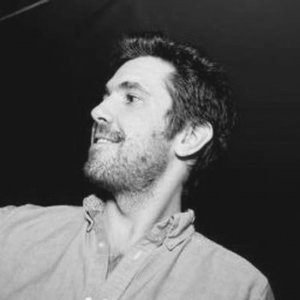
Clement Valla
Artist
Clement Valla is a New York based artist whose work considers the way computer vision systems apprehend the world, and the way in which automated image production entangles people and things in increasingly complex ways.
Siebren Versteeg
After Indifference
Siebren Versteeg’s works exemplify a continued exploration of the intersections between code (Langue) and abstraction. Here, algorithms are set loose to paint continuous yet indeterminate compositions in real-time. The meditative results confront their viewer with a kind of digital sublime where process supersedes resolution, and all is subject to the winds of change. Despite their embrace of continuous flux however, the meticulous rendering of the painterly that is at the heart of these algorithms imbue them with a reverent nod to the complex and often debated history of the viscous medium, asking us again to consider the notion of what a painting might and might not even be. After Indifference renders a continuous abstraction made with small brushes of varying personality and intention. In this work, the additive process of mark making builds ad infinitum, resolving only at the point when the video loops.
Siebren Versteeg
Surround
Siebren Versteeg’s works exemplify a continued exploration of the intersections between code (Langue) and abstraction. Here, algorithms are set loose to paint continuous yet indeterminate compositions in real-time. The meditative results confront their viewer with a kind of digital sublime where process supersedes resolution, and all is subject to the winds of change. Despite their embrace of continuous flux however, the meticulous rendering of the painterly that is at the heart of these algorithms imbue them with a reverent nod to the complex and often debated history of the viscous medium, asking us again to consider the notion of what a painting might and might not even be.
In homage to the classic Atari video game, Surround depicts a series of compositions created by two simultaneously painting algorithms, each represented by complimentary colors. As various interplays between the brushes unfold, palettes blend and interact; expressing the notion of a dialectical relationship that is evolutionary yet seemingly unresolveable.
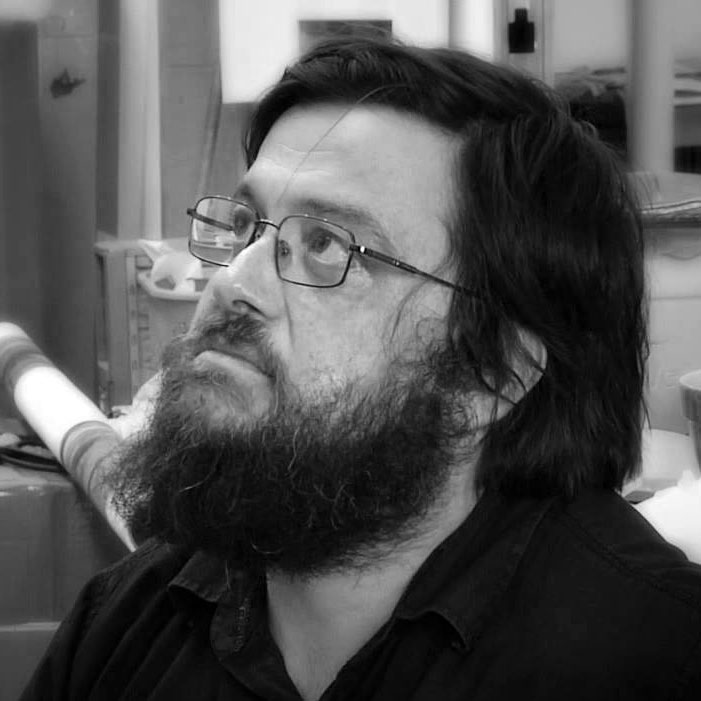
Siebren Versteeg
Artist
Versteeg was born in 1971 in New Haven, Connecticut and currently lives and works in New York. He received his B.A. from the Art Institute of Chicago and his M.F.A. from University of Illinois at Chicago.
Versteeg’s practice critically engages the systems used for disseminating images in our culture, as well as with the technology used to create them. He mines the digital realm for content and manipulates algorithms to create artworks that balance choice and chance.